Once upon a time, finding leads and learning about customers required big marketing departments, pollsters, and telemarketers (the horror!). Luckily, nowadays, we have Facebook lead ads to do a lot of this work for us.
If you don’t know, Facebook lead ads represent one of the best ways to learn about your audience and get them interested in your product (no telemarketers required). They’re a relatively cost-effective way to learn about your audience and generate leads that actually convert. Not only that, anyone can use them with a bit of help.
If this sounds like just the right thing for your company, read on to learn more!
What Are Facebook Leads Ads (And Why Should I Care)?
Facebook lead ads are promotions that ask readers to submit information about themselves, either by filling in details or having Facebook prefill the info. With these submissions, you (the business) can easily create a list of qualified leads interested in your product or service.

An example of a Facebook lead ad as you would see it on a feed.
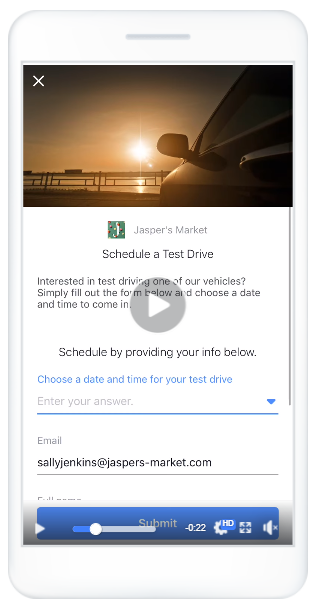
The view of a Facebook lead ad form.
[Image Source]
Lead ads on Facebook have a couple of unique advantages over other ads:
- They save time and reduce drop-off rates by prefilling people’s data already known by Facebook.
- They are designed for mobile, so they are easy to fill in.
- They can connect directly with your customer relationship management (CRM) service, so you have all of the data where you need it.
- They can be targeted at the people most likely to convert so that your leads are more likely to convert.
Don’t take our word for it. Take a look at how Facebook lead ads actually helped a real-life business—Amazing Lash Studio.
The business was opening a new location in Peoria, Arizona. They used Facebook lead ads to generate buzz around the opening so that the business could hit the ground running.
They ran lead ads for five and a half months before opening, targeting women between the ages of 22 to 65 in the area. To sweeten the deal, they offered people who signed up to attend the grand opening a chance of winning a free studio membership.
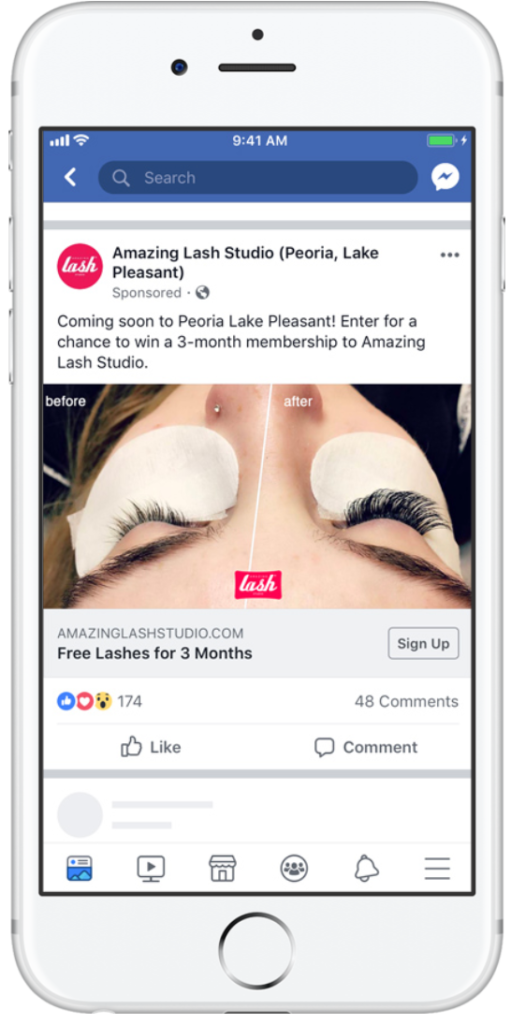
Amazing Lash Studio used lead ads on Facebook to generate buzz for their opening.
The results?
- They generated 1,422 leads before the store opened.
- They created $49,114 in monthly recurring revenue from new members.
- They had 56% more members in their first month when compared to other branches of the same franchise.
Facebook lead ads helped this business generate leads and make sales in their first month of operation—no easy task.
Now that you can see the potential of Facebook lead ads, let’s show you how to make your own.
How to Create a Facebook Lead Ad
In this tutorial, we will lead you through the process of making a Facebook lead ad so that you can start bringing in more qualified potential customers for your business.
Step 1: Start the Process
To make a Facebook lead ad, start by opening up and signing into your Facebook business page. From there, you are going to want to hit the Promote button.

Start making a lead ad by hitting the promote button.
Next, you’ll be taken to a screen where you can choose your marketing goal. Choose Get More Leads to start designing your Facebook lead ad.
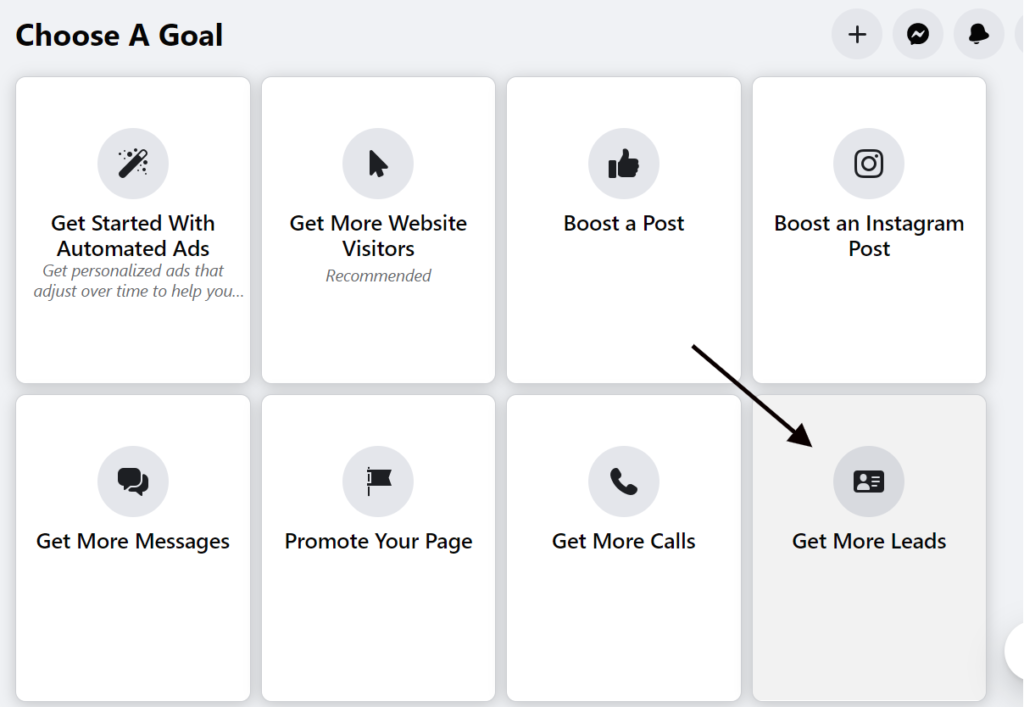
Click on “Get More Leads.”
Step 2: Set Up the Basics
The first step in setting up your lead ad is to pick a form name and choose whether you want to customize form text.
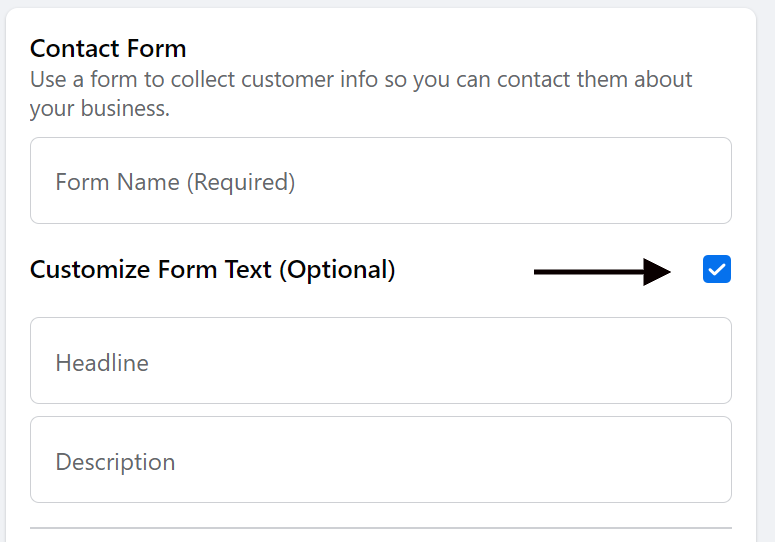
Set up the basics of your contact form.
By selecting customize form text, you get to add an optional headline and description to your lead form.

Use your form headline and description to help sell readers on completing your form.
Both headlines and descriptions can be a great opportunity to remind the people who are filling in your form what benefits they can get by completing your questions.
Once you fill in these details, your next step is to select the customer information you want to collect and the questions you want potential customers to answer. People like this process to be easy, so focus on need-to-know information and questions.
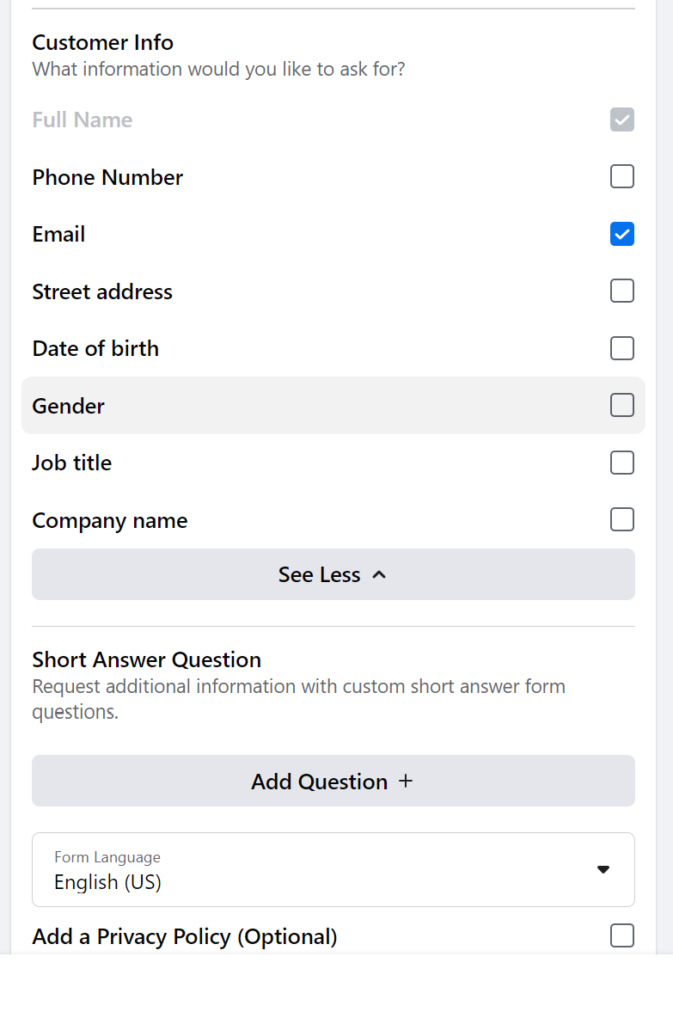
Take time picking what you want on your form.
The last thing to do on this page is set a privacy policy. All you need to do is add the link text (what your link will say) and the link URL (where the link will take you).

Add your own privacy policy here.
Step 3: Format Your Lead Ad
Hit next, and you can start formatting your lead ad’s look. You’ll need to customize your Ad Creative or how your ad will appear on people’s feeds.
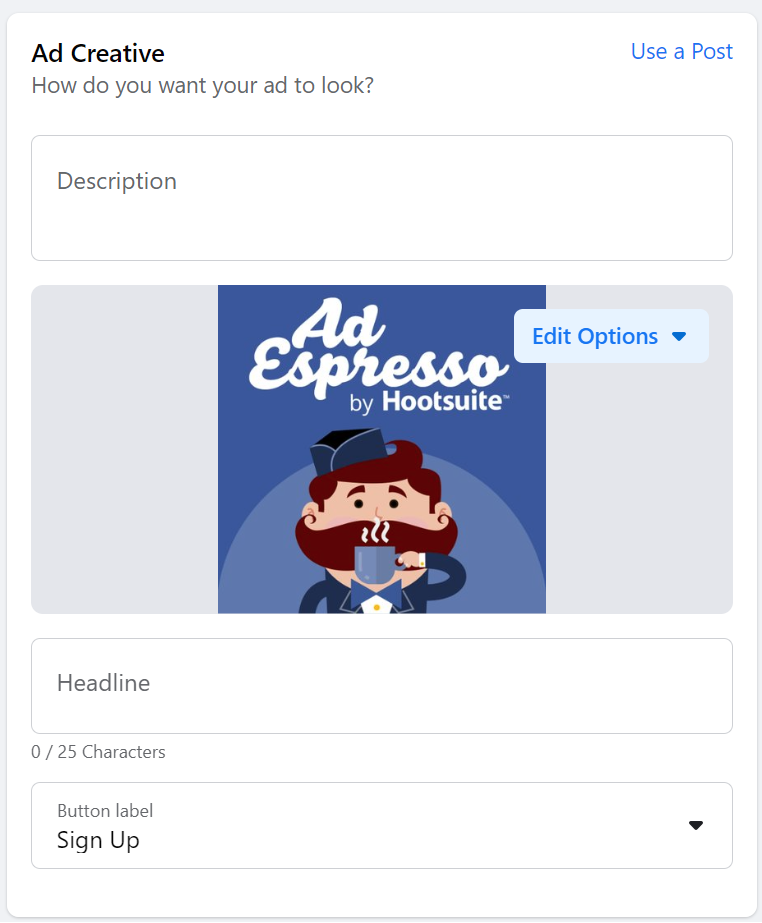
Use catchy images, videos, and text to make your ad stand out.
In this section, you will need to:
- Add a description to your ad: The copy that is going to go above your ad.
- Add a headline to your ad: The copy that will go beside your CTA.
- Choose your CTA button: Click on “Button label” and choose from the dropdown menu.
- Pick your ad image or video: Click on edit options and upload your own content, or choose from content you’ve already posted to Facebook, or use a stock image.
This section should be the one that really takes up most of your time. After all, you want to make sure your ad is striking and memorable. You only get so much room to wow people, so pick your words, images, and videos carefully.
Remember that you want to give people a reason to engage, so use your descriptions, headlines, and media to clearly highlight what the customers will get (a special offer, a discount, etc.) in return for their information.
Step 4: Pick Your Audience
In this section, you will get a chance to tell Facebook who you want to target with your lead ads. You can choose from existing audiences, edit your existing audiences, or create a whole new audience.
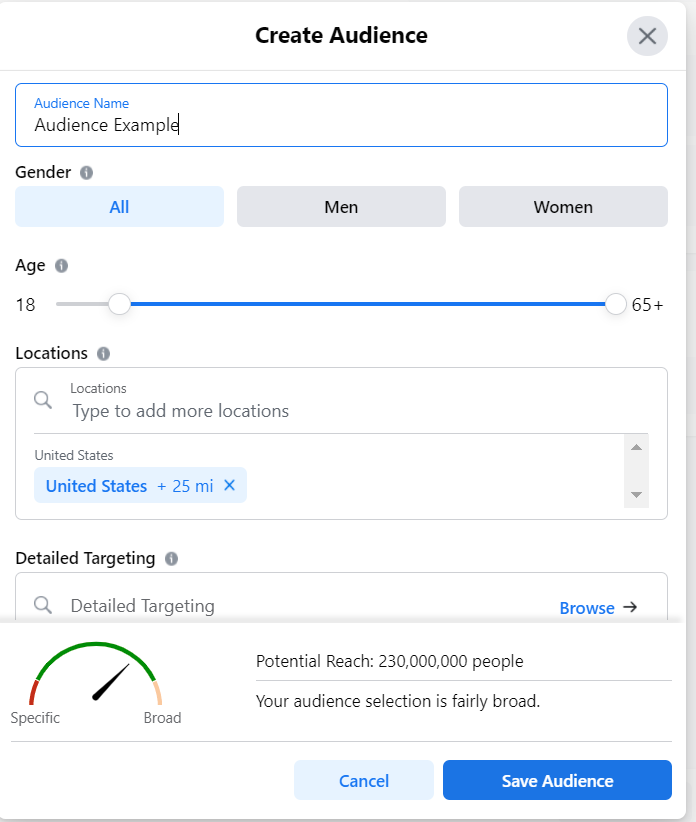
Customize your audience to get your ads targeted properly.
Be as specific as possible. Don’t forget to browse detailed targeting to get the most out of Facebook’s algorithms.
Step 5: Select Your Budget, Duration, and Final Touches
Finally, we come down to finalizing how much you want to spend, over what period of time you’ll be spending it, and some final choices you can make before paying and promoting your product.
With the budget, you will want to adjust:
- The number of days that it will run
- The total ad budget you want to spend over the course of the promotion
Keep an eye on the estimated reach (just above the dollar amount) to see if your Facebook ad budget is where it needs to be.
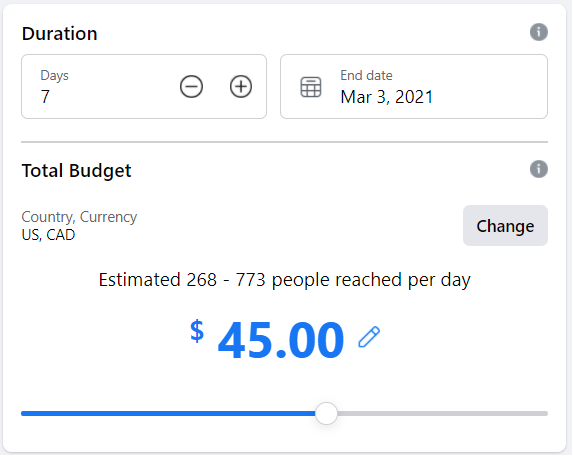
Set your budget amount and duration.
Lastly, polish off some final choices around placement (whether your ads will go on Facebook, Instagram, or Messenger), whether you want to create a Facebook Pixel to track your ads, and what your payment method will be.
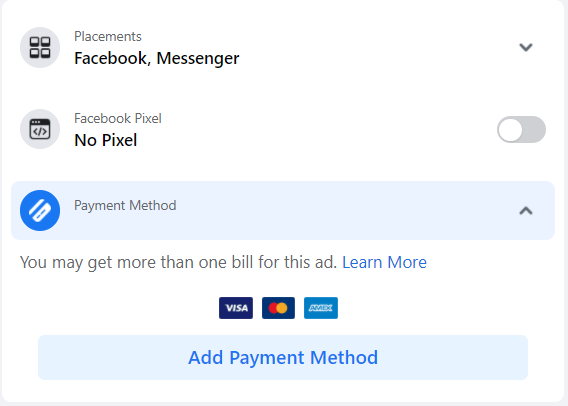
Set your placements, Facebook Pixel, and payment methods, and you’re almost all done!
When this is all done, hit the Promote Now button, and your ad will go live! If you need more help, consider taking a look at Facebook’s own training on creating lead ads on their platform.
Don’t forget that you’ll also need to figure out how to get your leads to where you can use them. Check out Facebook’s CRM integrations or download options; we will also be discussing this more later.
3 Fantastic Facebook Lead Ad Examples
Facebook lead ads aren’t money-making machines right off the bat. You need to put in the effort to make a memorable, purposeful ad to see those sweet, sweet results. Here are three examples that you can learn from to make the best darn lead ad possible.
Firebirds Wood Fired Grill: Give People a Reason to Engage
Lead ads are like transactions: you get information, but you need to give something in return. In their ads, Firebirds Wood Fired Grill offered people $10 off for joining their loyalty club.
What was the result? They got 5,518 new members and saw a 7X return on their ad spend.
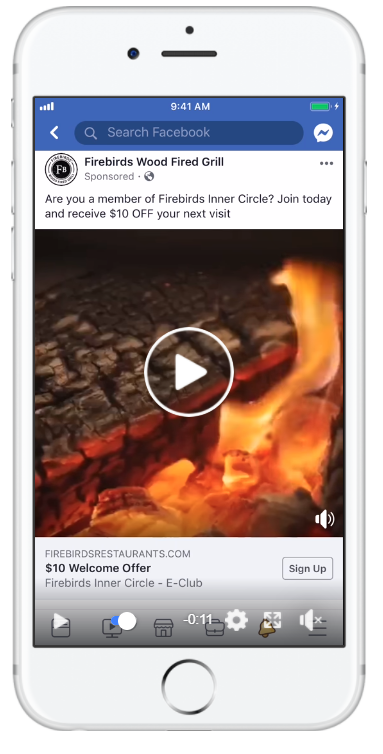
Firebirds Wood Fired Grill used an offer to bring in customers.
So if you want to have people clicking and filling in your lead ad form, offer them something to make it worth their while. You could use:
- Special promotions
- Insider information
- A free download
- Access to a special event
It’s not just about having a special hook to get them in the door. You also want to make sure that scrolling leads will be able to understand your offer quickly. Your text, images, and videos should all work together to express to readers how they can benefit from submitting your lead ad form.
In the case of Firebirds, they chose a video that showcases their food to grab your attention and a banner that advertises their $10 off welcome offer. By putting effort into your presentation and your value proposition, you too can make your ads resonate with audiences on Facebook.
Bremerton Wellness: Choose Your Questions Carefully
When setting up a lead ad, you don’t want to list the first questions that come to mind. To engage leads, strategically choose the number of questions and the content.
Bremerton Wellness, a chiropractic office, focused on questions about where people feel pain—a topic that matters to their target audience. They also limited their form to only six questions.
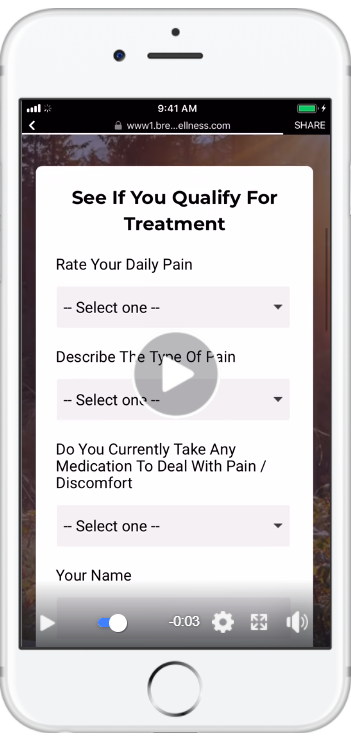
Pick only the most relevant questions for your lead ad.
When paired with an introductory offer, Bremerton Wellness saw the number of new patients increase by 55% a week, along with a 60% increase in leads generated from Facebook compared to other lead sources.
Part of their success was choosing the right questions and, importantly, keeping the number of questions low. We’ve run the numbers, and for lead ads with one question, you get a conversion rate of 43.58%, but for eight questions, that rate falls to 9.92%.
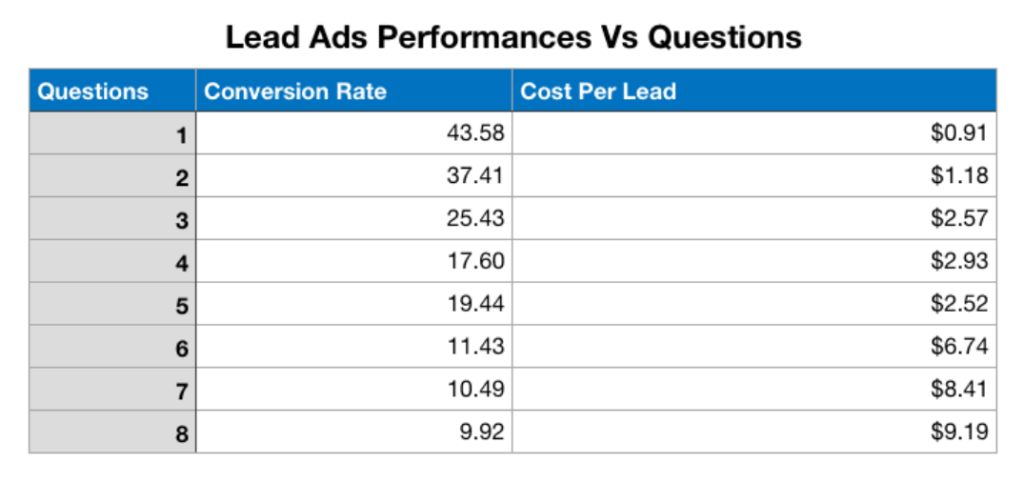
Asking more questions doesn’t always help you.
What does this all mean?
Ask the questions that you need to, but don’t overdo it. Facebook has even prepared a table to determine which questions should be asked based on your intended goal. So take your time, and find the questions you need to ask to accomplish your marketing goals.
MEL Science: Take Advantage of Targeting Options
Targeting options are how you tell Facebook who to send your ads to. The more relevant you make your ad content to your audience, the higher your conversion rate will likely be (AKA, more form submissions).
For their lead ads, a science subscription box service aimed at homeschooling parents called MEL Science used lookalike audiences to target people who were similar to their previous customers. The result? MEL Science got 8,000 registrations and had a 40% decrease in the cost per acquisition.
A large part of their success was using Facebook’s targeting options to advertise to people who were interested in homeschooling during the pandemic.

Use targeting to make your ad campaign a success.
For your own marketing efforts, a great place to start is by using lookalike audiences based on your current customers. Facebook can use your existing customer data and then try to target other people they believe are similar to them. If your customers love your product, there’s a good chance people like them will love your products too!
Another option is to dive into Facebook’s custom audience targeting options.
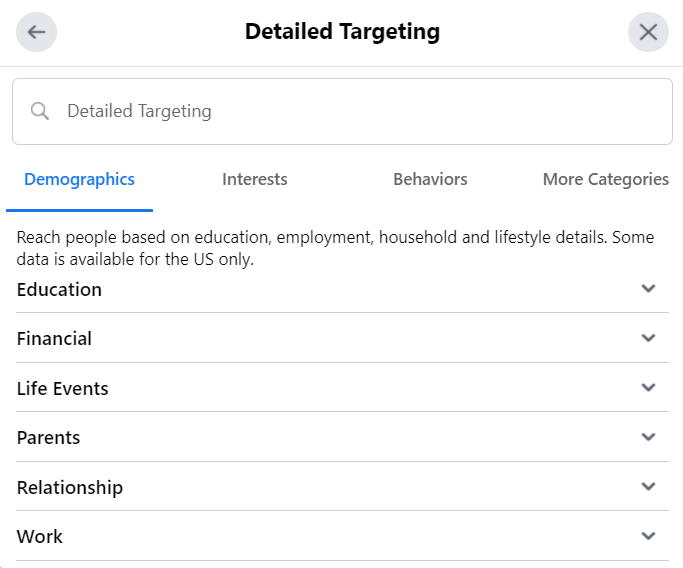
Explore your targeting options to get the best possible audience for your lead ads.
As you can see, you can go into the minute details of your customer base if you want to. Make sure to check out all of your options so that Facebook can place this ad for only the most relevant readers.
Learn more about picking the right audience with our guide to creating custom audiences and targeting on Facebook.
Facebook Lead Ads Testing Tools
An advantage to lead ads compared to other online advertising is that they sync with your CRM. When you get the leads, you can automatically store that information in your CRM and take the next step in building that relationship (like sending the lead an email). But before you make the Facebook lead ad live, it’s good to test the integration.
Facebook Lead Ads Testing Tool and Integrations
To help you mesh your CRM and Facebook, Facebook has created a resource to walk you through the process.
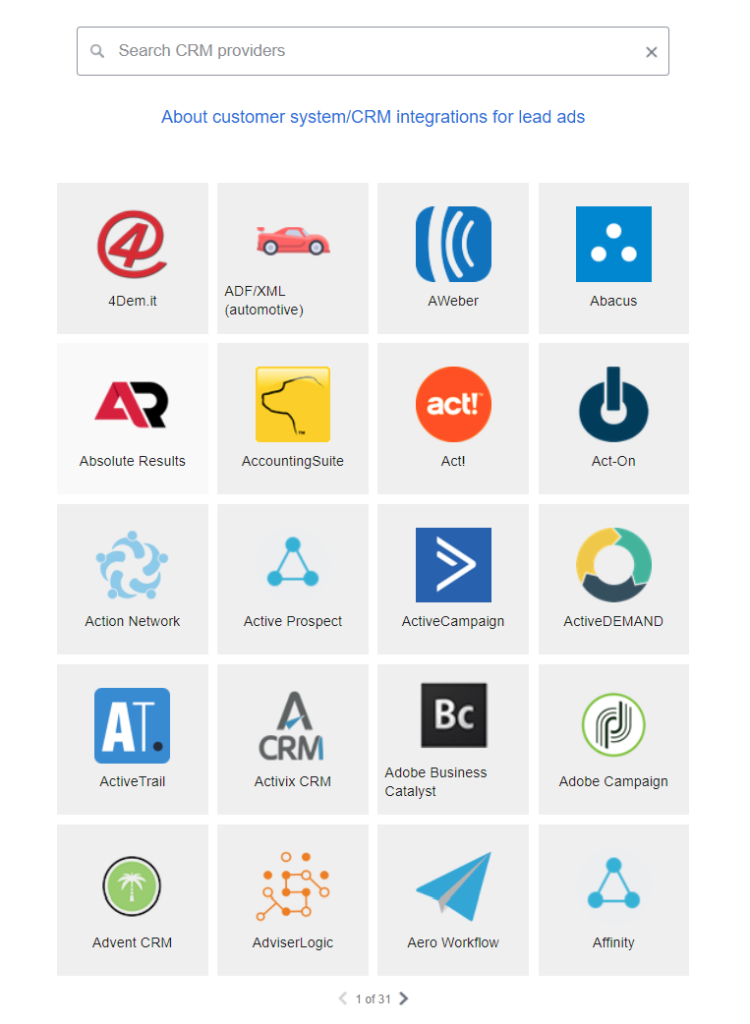
Facebook can integrate with a good number of CRMs.
Search for your CRM or click on the logo, and then follow Facebook’s instructions. Afterward, use Facebook’s testing tool to make sure that everything is working as it should (you’ll need to log in before you can access it, though).

Use this tool to check whether your CRM has been synced correctly.
To use it:
- Open the tool.
- Select the Facebook Page it will be connecting with.
- Choose the Form Name of your already-created lead ad.
- Press “Create lead.”
- You should get a confirmation that the lead has been sent.
- Check your CRM to make sure the lead has arrived.
- If you want to check again, make sure to press “Delete lead” first.
AdEspresso Lead Ads Synchronization Engine
AdEspresso has also designed a tool to help you ensure that your CRM and Facebook are working together. The best part is that you can use it to sync platforms like HubSpot, Mailchimp, and Google Ads.
To use our testing feature, sign in to your AdEspresso account and click on Tools and select Data Sync. If you don’t have an account yet, you can try out the free trial.
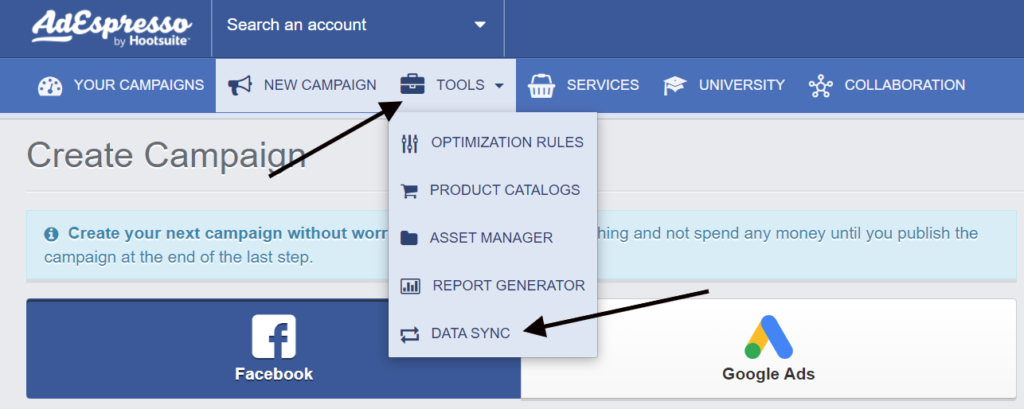
Click on Data Sync to get started.
Next, create a new sync name and click on “Create new sync.”
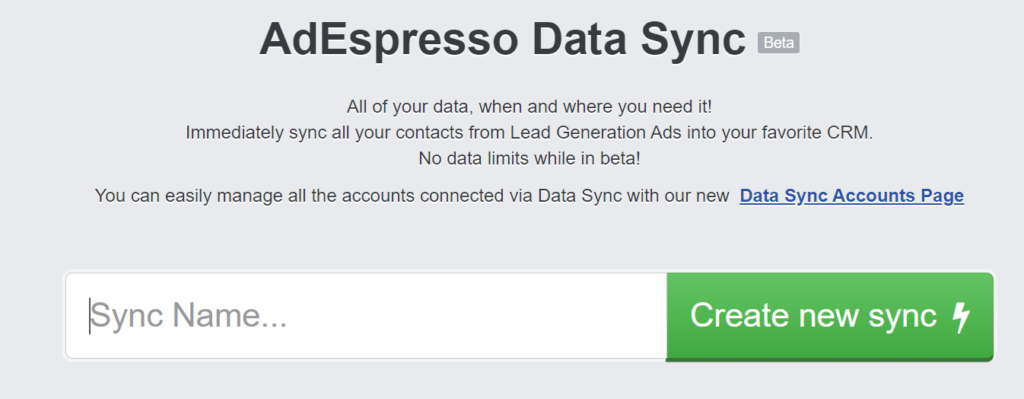
Add a name and start your data sync.
After that, select the source that you will be drawing from. In this case, Facebook.
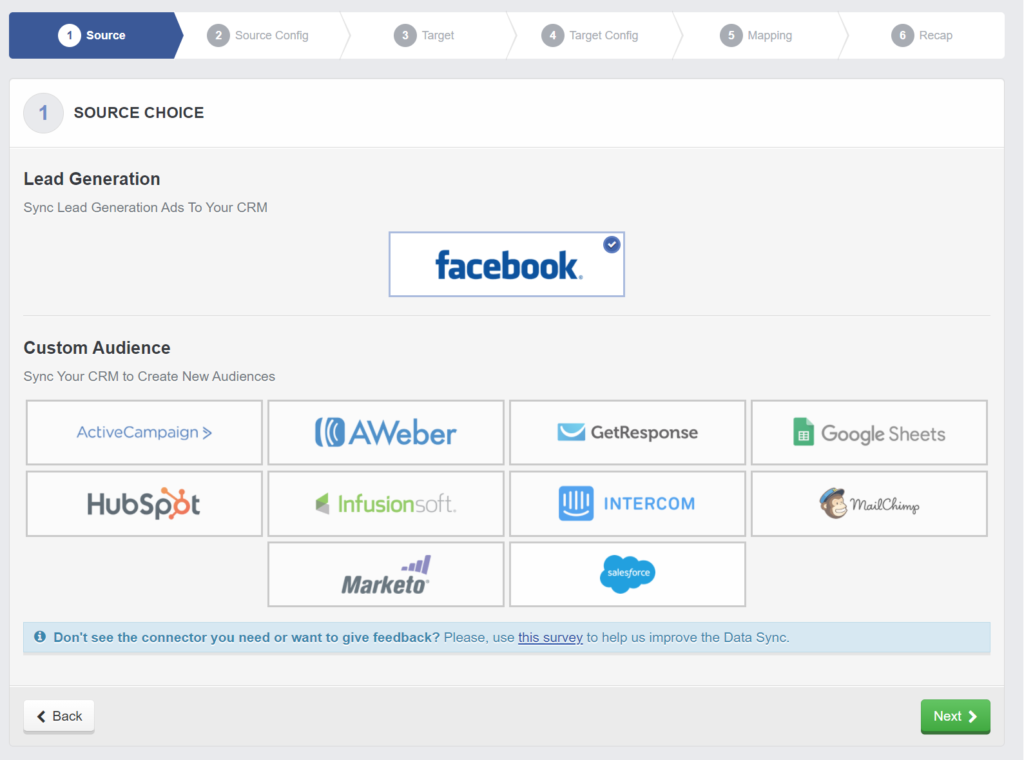
Choose your data source.
The next step is configuring your source. Here, you’ll need to select which Facebook Ad Account you want to sync from, then click on Facebook Lead Gens Form, and click on the appropriate Facebook Page you are drawing from and the Lead Gen Form you will sync with.
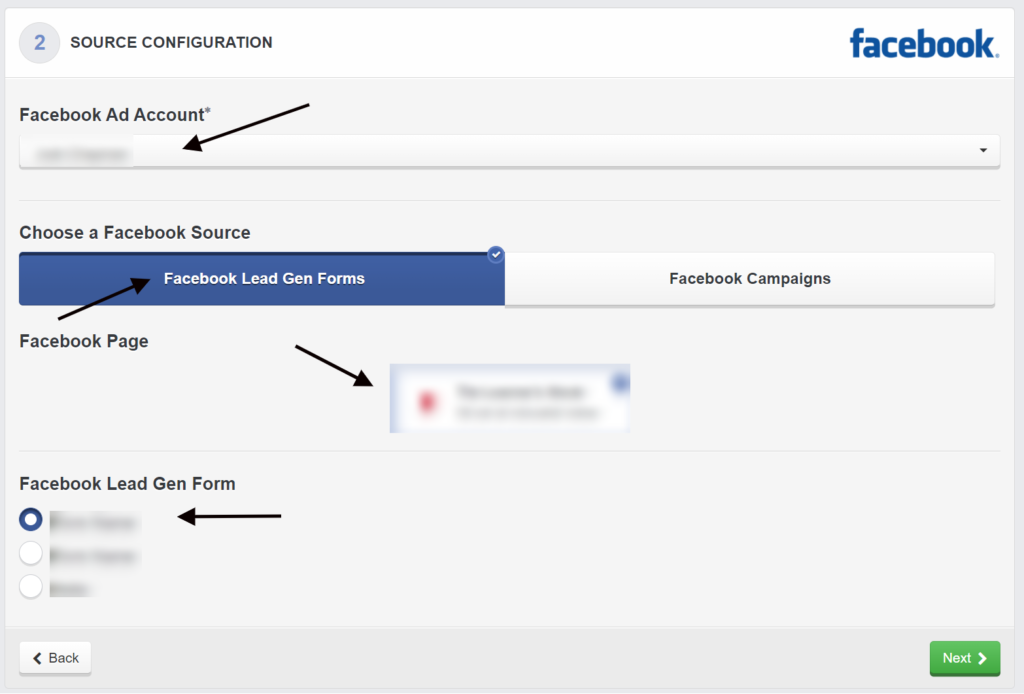
Configure your source so you get the proper data flowing in.
Now, we need to set up a target for this data, your CRM. Choose your CRM from the list and hit next.

Select the target for your data sync.
We need to configure your CRM now. If you have synced with this CRM before on AdEspresso, just choose the CRM account you want to sync with. Otherwise, set up a new account and verify it by clicking on “Add new account.”
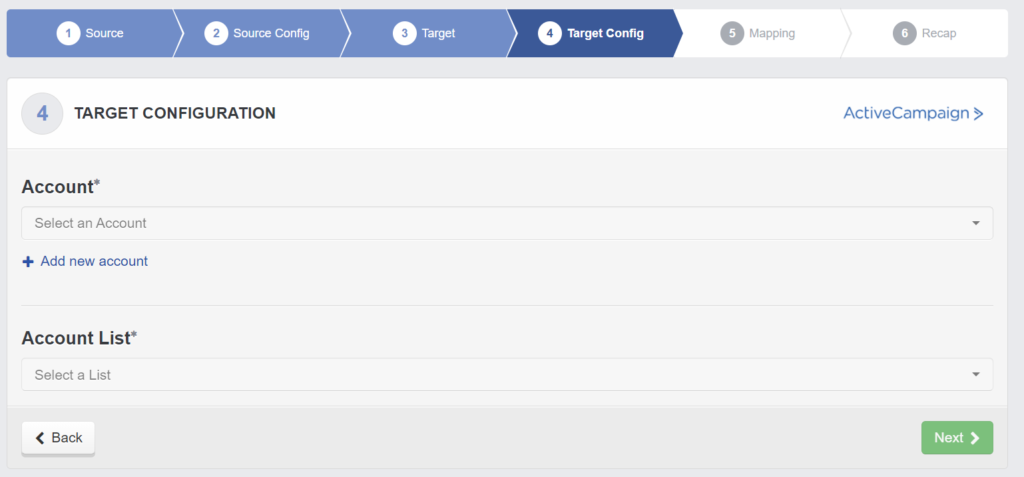
Configure your target information so that the sync will work properly.
After you have connected your CRM, you need to map the data that Facebook collects with where it will go in your CRM.
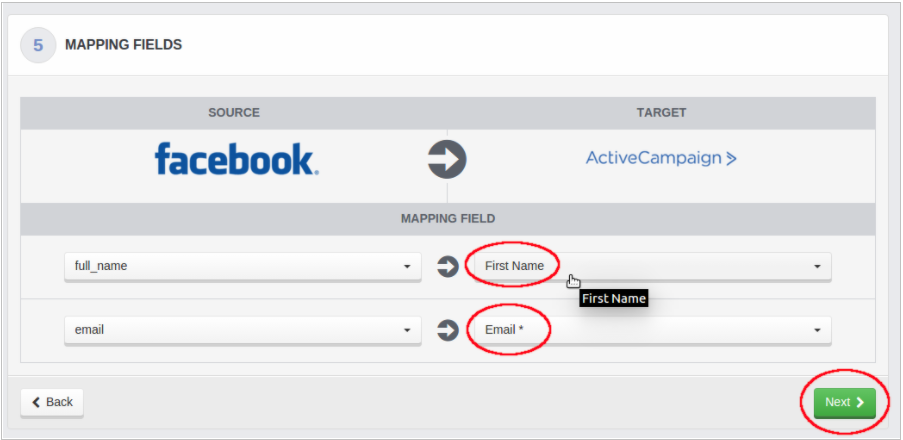
Configure your mapping fields in this step.
The last step is reviewing everything you have set up and applying all of the changes you made. Once this is done, you should have seamless connections between your Facebook lead ads and your CRM.
Boost Your Marketing Success Through Facebook Leads Ads
Facebook lead ads are a unique opportunity for marketers to connect directly with their potential leads. With the reach of Facebook and the sophistication of their targeting algorithms, you can now place your questions directly in front of your target audience to learn more about your leads.
The possibilities are truly endless, as long as you know what you are doing. Once you get a feel for Facebook lead ads, these promotions are an easy, effective way to build your list of potential, high-value customers.
What are your Facebook lead ad success stories? We would love to hear about them in the comments below!
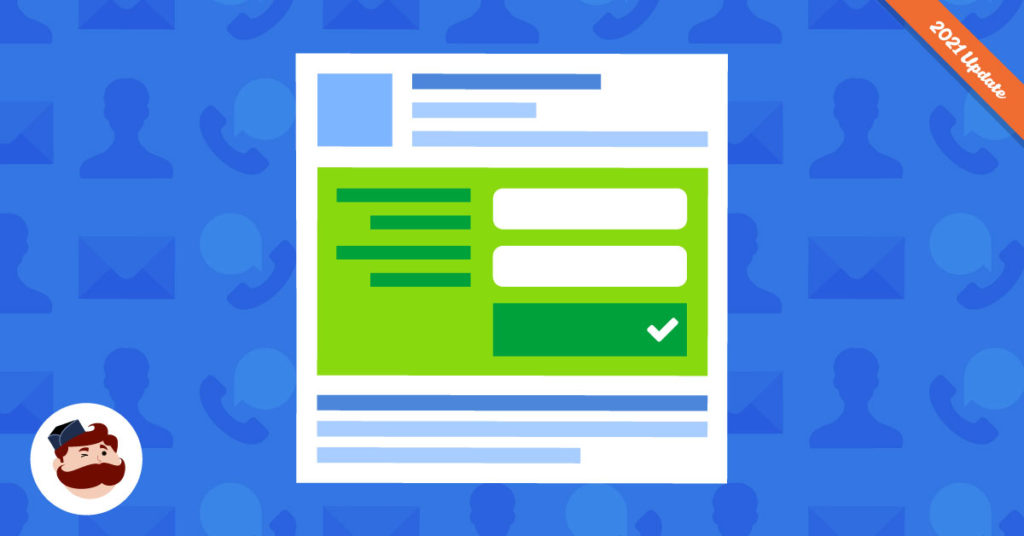
Leave a Reply